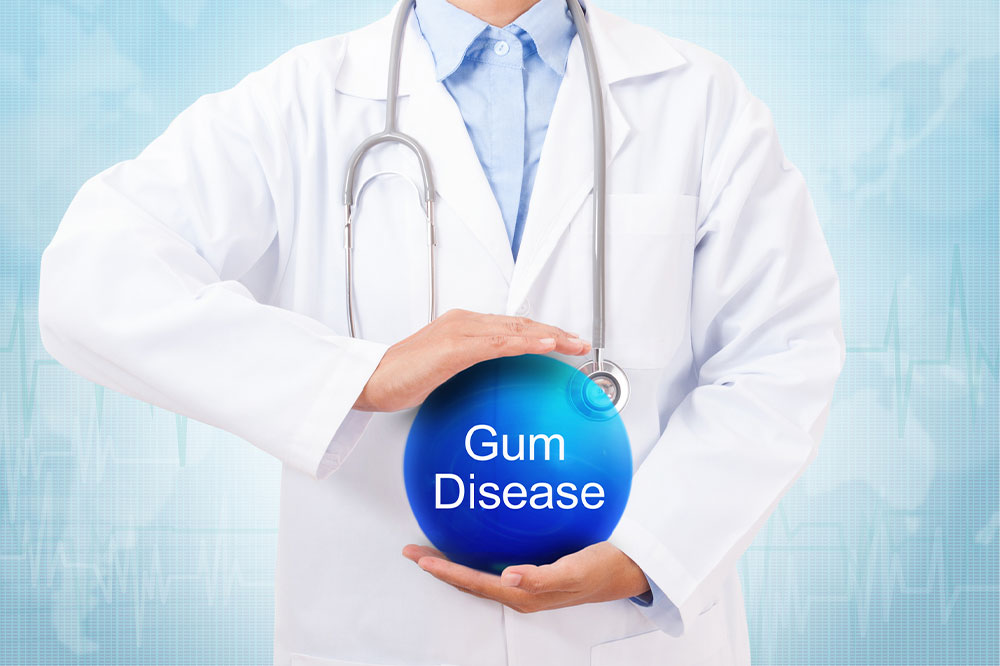
Gum disease – Causes, symptoms, and treatments
Gum disease, also known as gingivitis or periodontal disease, is one of the common dental problems experienced by adults. If one is not careful, it could lead to permanent tooth decay and even loss of teeth due to damaged gums. However, with timely diagnosis and medical intervention, it is possible to reverse the condition and better manage the symptoms. Here is a brief overview of the main risk factors and causes, noticeable symptoms, and available treatments.
Causes of gum disease
There are several involved risk factors and external causes of gum disease.
Genetic and developmental problems
A family history of close relatives having suffered or suffering from gum disease increases the likelihood of this bacterial infection. Another growth factor that can trigger gum problems is crooked teeth. If the molars are misaligned, it leaves space for bacteria to collect and breed unnoticed. Brushing and flossing may also not help if the space is hard to reach. Also, a bacterial buildup affects the base of the teeth and gums, triggering an infection.
Lifestyle choices
Poor oral hygiene results in plaque buildup, one of the leading triggers of gum disease. Not brushing regularly, not flossing, or not using mouthwash to rinse after meals contributes to this factor. Eating foods high in sugars but low in good fats, calories, and carbohydrates can lower immunity. For example, if a person suffers from nutritional deficiencies, especially vitamin C, it can severely affect gum health. The body must maintain a proper balance of nutrients, vitamins, and minerals to promote oral health. Also, habits like frequent smoking or chewing tobacco expose the gums to various toxins, thus increasing the risk of gum disease.
Other triggers
Women may experience hormonal shifts during pregnancy or even regular menstruation. These changes in hormone levels can weaken the gums and increase the risk of bleeding and inflammation. One might notice these issues while brushing or flossing, and it could be a sign of developing gum problems. Some prescriptions used to cure common medical conditions may affect the saliva production in the mouth. Bacteria that grow and multiply rapidly due to low saliva levels also increase the risk of gingivitis or periodontal diseases, among other gum problems. People with diabetes are also at a high risk of oral problems triggered due to an imbalance in blood sugar levels.
Most noticeable symptoms
The severity of the following symptoms may vary depending on the triggers:
- Increased teeth sensitivity and pain while chewing foods
- Swelling, redness, and pulled out gums
- Bleeding after brushing or flossing
- Pus forming between the teeth and gums
- Changes in breath are caused due to the infection spreading in the mouth
- Loose teeth and even malocclusion (misalignment of molars)
If any of the symptoms persist, immediate medical attention is advisable. It is possible to reverse the effects of gum disease with early diagnosis using minimally invasive treatments.
Treatment options for gum disease
Often, dentists may start a course of prescriptions to provide short-term relief from the symptoms and counter the infection. Gingivitis and periodontal disease are the two most common types reported by a majority of the patients. Treatment can be either surgical or non-surgical, depending on how far the infection has progressed.
Non-surgical treatments
Plaque buildup cleaning is suggested for most patients. Dentists will remove the tartar and plaque buildup to reduce the risk of the infection spreading. Some deep cleaning procedures like scaling and root planning are done using a local anesthetic. Deep cleaning also helps remove some of the hardened plaque at the top of the gums.
Surgical procedure
Where cleaning will not suffice, dentists may suggest aggressive surgical grafting and even tissue regeneration procedures to manage the infection. Flap surgery helps clean the tartar buildup under the gums, reaching deeper areas. This technique also reduces the size of the gums and prevents reinfection by sealing areas not allowing bacteria to penetrate and grow. For severe cases, guided tissue regeneration is suggested with flap surgery. This procedure stimulates natural tissue growth to further support the teeth during recovery.
Gum disease can also destroy healthy bone under the teeth. Some patients may require a proper bone graft to replace the damaged foundation. This is usually done by harvesting the patient’s bone or after creating a synthetic one. Like bone grafts, soft tissue can also be reattached after harvesting it from the patient’s upper mouth to fill in the gaps. For advanced bone loss, bone surgery is done to reshape and reduce the size of any craters that form after the gum disease has spread.




